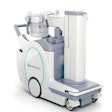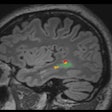
PHOENIX - There are seven hidden reasons why most employees quit their jobs, a trend that in radiology is exacerbating the shortage of radiologic technologists (RTs). But in a July 10 presentation at AHRA 2022, Maureen Firth offered tips for improving the recruiting and retention of RTs.
 Maureen Firth.
Maureen Firth.While employee retention has always been an issue across many industries, workforce shortages have become particularly acute during what's been called the "Great Resignation," a current economic trend in which many people of working age have voluntarily stepped away from full-time employment. This is being felt in radiology, as hospitals and imaging centers are forced to cope with widespread shortages of technologists, according to Firth, an educator in radiological sciences at Passaic County Community College in New Jersey.
The situation has put a renewed focus on the importance of recruiting and retention. Imaging facilities need to make sure not only that they hire the right candidates for technologist roles but also that once they hire them, they retain the RTs they have, Firth said. Her presentation was part of the AHRA's Aspiring Leaders program, designed for technologists who are interested in moving into roles in radiology administration and management.
There are seven hidden reasons why employees leave, according to a 2006 study by Schleifer J et al based on exit interviews of almost 18,000 employees.
- Job not as expected
- Job doesn't fit talents and interests
- Little or no feedback/coaching
- No hope for career growth
- Feel devalued and unrecognized
- Feel overworked and stressed out
- Lack of trust or confidence in leaders
Firth noted that the reason given for over 70% of hospital turnover is "poor fit" between employer and employee. This puts increased emphasis on the recruiting and interviewing process, to make sure that employers are truly recruiting candidates that will be compatible with their organization.
To this end, traditional interviewing techniques are falling short, Firth believes. Traditional interviewing using questions like "Where do you see yourself in three years?" don't do much to ensure a good fit between employers and candidates, she said.
 The Candor Questions boxed set of interview questions.
The Candor Questions boxed set of interview questions.Firth also doesn't put much stock in applicants for technologist jobs who get high scores on the registry exam -- someone with a score of 100% on the exam could still be a poor fit for the organization, due to personality quirks or other issues.
Instead, Firth recommends that imaging facilities dispense with traditional techniques in favor of what she called peer-review interviewing using behavioral-based questions that ask candidates how they have responded to challenging situations in the past. Their answers can then be graded on a scale to quantitatively evaluate candidates based on how they measure up to the organization's values and culture.
Firth recommends the use of Candor Questions, a set of questions developed by Candid Culture Press. The company has boxed sets of questions for leadership, team building, and personnel management, and Firth has found the set covering interview questions to be particularly useful.
Candor Questions include the following:
- "What frustrates you at work?"
- "Tell me about a time you gave someone negative feedback."
- "What's the worst news you had to tell someone at work?"
- "Tell me about a previous bad fit with another organization."
- "Tell me a time you were working with your classmates. You were doing all the work. Who did you talk to? What did you say?"
- "Tell me about a difficult person you worked with. How did you navigate the relationship?"
Candidate responses can then be graded on a scoring system, and certain answers can be given greater weight based on the organization's priorities, with categories of Firth's scoresheet including caring, commitment, integrity, teamwork, and safety. Responses are graded based on the STAR method: situation, task, action, result.
Once hired, Firth noted that getting employees engaged is the key to recruiting and retention. Prior to the Great Resignation, organizations should have been targeting an annual turnover rate of about 12%. While that may be a lofty goal in today's tight labor market, technologist managers and radiology administrators should still be doing everything they can to keep employees engaged.
Contrary to what you might think, higher compensation doesn't necessarily guarantee higher engagement -- she said such tools tend to only last "as long as the next paycheck." Instead, she recommends:
- Have better communication with employees -- and not just at review time. Use regular team huddles and one-on-one meetings to keep in touch with staff.
- Empower team members to make their own decisions and "create ownership -- not compliance."
- Lead by example. Don't expect your staff to continue wearing face masks on the job, for example, if you're not wearing yours.
- Celebrate wins, be generous with thank-you cards, and reward positive behavior and achievements.
Most of all, she advises managers to get out from behind their office computers to find out what's happening on the floor of the hospital.
"Get out of your office!" Firth advised AHRA attendees. "Look who's on the floor. They are your responsibility."



















